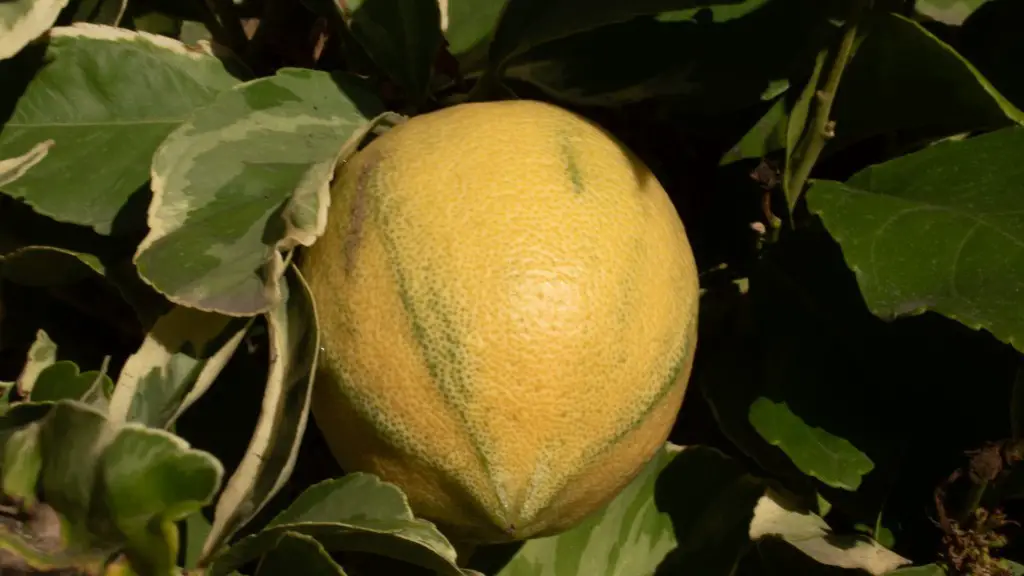Growing an avocado tree from an existing pit is fairly simple, yet many of us are unaware of how easy and enjoyable it can be to watch a seed grow into a mature plant. For the beginner avocado grower, planting an avocado tree in the ground can be a rewarding experience.
Avocados are tropical plants that prefer warm climates, however they can survive in climates that experience freezing temperatures. To grow a successful avocado tree in the ground, start by planting in the spring when soil temperatures average approximately 64 degrees Fahrenheit.
The first step to planting an avocado tree is to locate a suitable location. Avocados prefer well-drained soil and full sun. Look for a spot in your yard that has plenty of room to grow and has never received herbicides or pesticides. Make sure the location has plenty of drainage and remove any existing plants or sod before planting.
Next, prepare the soil. Avocados like loose, slightly acidic soil with a pH between 5.5 and 7.5. You can have your soil tested and amended accordingly. Dig a hole that is about twice the size of the root ball and mix some compost or mulch in with the soil.
Now it’s time to plant your avocado tree. Carefully remove the avocado tree from its pot and brush away the excess soil from the roots. Place the tree in the hole and make sure it is at a depth so that the soil line is at the same level as the soil outside of the hole. Fill in the hole with amended soil and mix in compost or mulch.
A layer of mulch will help keep the soil moist and will help the root system develop. Water the plant deeply when first planting and continue to provide deep and regular watering during the first few weeks. Depending on the type of avocado, you will want to provide plenty of space, around 10-15 feet, between the avocado tree and other trees or shrubs.
Avocados don’t require a lot of fertilizer, but it’s a good idea to mix in some nitrogen-rich fertilizer when first planting the tree. This will help the tree get off to a strong start. Keep the fertilizer away from the trunk of the tree and water the fertilizer in well.
Pruning an Avocado Tree
Avocado trees require regular pruning. This will encourage the growth of new branches and help the tree stay healthy. Prune away any dead or damaged branches, as well as branches that are growing in an unsightly shape. Prune away competing shoots that are growing up around the main trunk and only prune the branches that are low to the ground.
For the first few years of growth, prune the tree lightly and focus more on thinning out the canopy to create an open framework. This will help the avocado tree reach maturity and produce higher yields. Make sure to use sterilized tools when pruning and avoid making drastic pruning cuts.
You can also use pruning to shape the tree how you want. Prune away any shoots that are growing too close together and any branches that seem out of place. Make sure to make cuts that are clean and angled away from the bud eye.
Avocado trees require occasional trimming. This helps keep the tree’s height in check and encourages the growth of new branches. Trim the tree lightly a couple times a year, in late spring and early summer, to maintain its shape and size.
Harvesting Avocados
Harvesting avocados from a tree is part of the rewarding experience of growing your own food. Avocados can take anywhere from 6 to 12 months after planting to produce fruits.
The commercial variety ‘Hass’ can be harvested from winter to early summer depending on when the tree is planted. Other varieties may produce throughout the year and each variety matures at different times.
It’s important to look out for signs of ripeness. Avocados are typically ready to be picked when they turn a dark green color and yield slightly when squeezed. Another way to tell is by testing the stem – if it comes away easily, the fruit is ready. Don’t wait until the avocado turns brown and soft to pick it as it will be overripe.
The best way to harvest an avocado is to use pruners or a sharp knife. Cut the stem of the avocado just above the fruit. Make sure to harvest the fruit when it’s fully ripe as unripe fruits won’t ripen properly once picked.
Disease Prevention
In order to keep your avocado tree healthy and producing fruits, it is important to practice good maintenance and disease prevention. Avocado trees can be vulnerable to certain diseases such as powdery mildew, root rot, and avocado root knot nematode.
Good management practices such as keeping the area around the avocado tree free from weeds and debris can help prevent diseases from developing. It is also important to water the tree consistently but not too frequently. Allow the soil to dry out between waterings and make sure the tree is receiving proper drainage.
Providing the avocado tree with an adequate amount of sunlight is key to keeping it healthy. Avocado trees need full sun in order to thrive, so make sure the tree receives at least 6 to 8 hours of direct sunlight each day. If the tree is planted in a location that does not get enough sun, it will not grow as well and may become prone to disease.
It is also important to feed the tree regularly. Fertilize the avocado tree with nitrogen-rich fertilizer on a monthly basis to keep it healthy and promote the growth of new leaves and branches. Make sure to use a fertilizer specifically formulated for avocado trees to ensure that the tree gets the nutrients it needs.
Pest Control
Pests can be a common problem for avocado trees. Common pests that can affect avocado trees include aphids, mites, and scale insects. Many pests can be controlled with the use of insecticides and natural predators, however it is best to prevent pests from occurring in the first place.
Good cultural practices such as proper sanitation, pruning, and fertilization can help to reduce the occurrence of pests. Make sure to keep the area around the tree free from weeds and other debris which can provide hiding places for pests. Remove any dead or damaged branches as well as any branches that are growing too close together.
Avocado trees can also be affected by a number of diseases, so it is important to keep an eye out for any signs of disease. Look for signs of wilting, discoloration of leaves, or any unusual growths on the tree. If you notice any signs of disease, it is important to take immediate action in order to prevent it from spreading.
Creating an Avocado Garden
Growing an avocado tree in the ground is an enjoyable experience. Not only will you reap the reward of homegrown avocados, but you’ll be nurturing a living, breathing piece of nature. Creating an avocado garden is a great way to introduce some green space into your outdoor living area.
You don’t need a big outdoor space in order to have your own avocado garden. You can start small by planting just a few avocado trees and then growing your garden as the trees mature. Plant different varieties of avocado trees that produce avocados at different times of the year to ensure a continuous harvest. Avocado trees also make attractive landscape specimens, so you can combine your avocado garden with other potted plants for a vibrant display.
With the right knowledge, anyone can plant and nurture an avocado tree in the ground. Avocado trees don’t require a lot of effort but do need regular maintenance in order to be successful. With the right amount of care and attention, you’ll be able to enjoy the delicious, nutritious fruits of your labor.



